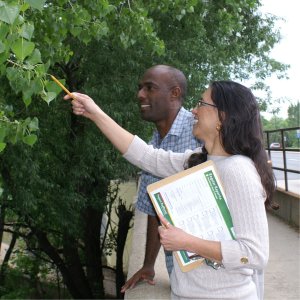Citizen Science Then and Now
August 19, 2013
In the latest issue of American Scientist, NEON Citizen Science Director Sandra Henderson and Chicago Botanic Garden Senior Scientist Kayri Havens describe the evolution of the six-year-old NEON citizen science program Project Budburst and tie it back to its historic roots in the observations recorded by naturalists and amateur scientists of centuries past.
“In a sense, all scientists were once citizen scientists,” Havens and Henderson write. Past plant observers such as Henry David Thoreau recorded the timing of nearby cherry tree blooms and fruit with pen and notebook. Now, Project Budburst recruits non-experts armed with modern technology such as smartphones, cameras and the Internet to collect systematic observations of plant phenology, or the timing of key events in the life cycles of plants. Scientists have already used the resulting national-scale, crowdsourced data set in several studies that describe some of the impacts of climate and environmental change on animals, plants and human society.
Havens and Henderson also describe some of the keys to Project Budburst’s success, such as broad participation, seasonal campaigns, and learning from and contributing to an emerging citizen science movement. Their article, “Citizen Science Takes Root,” appears in the September-October 2013 issue of American Scientist.

